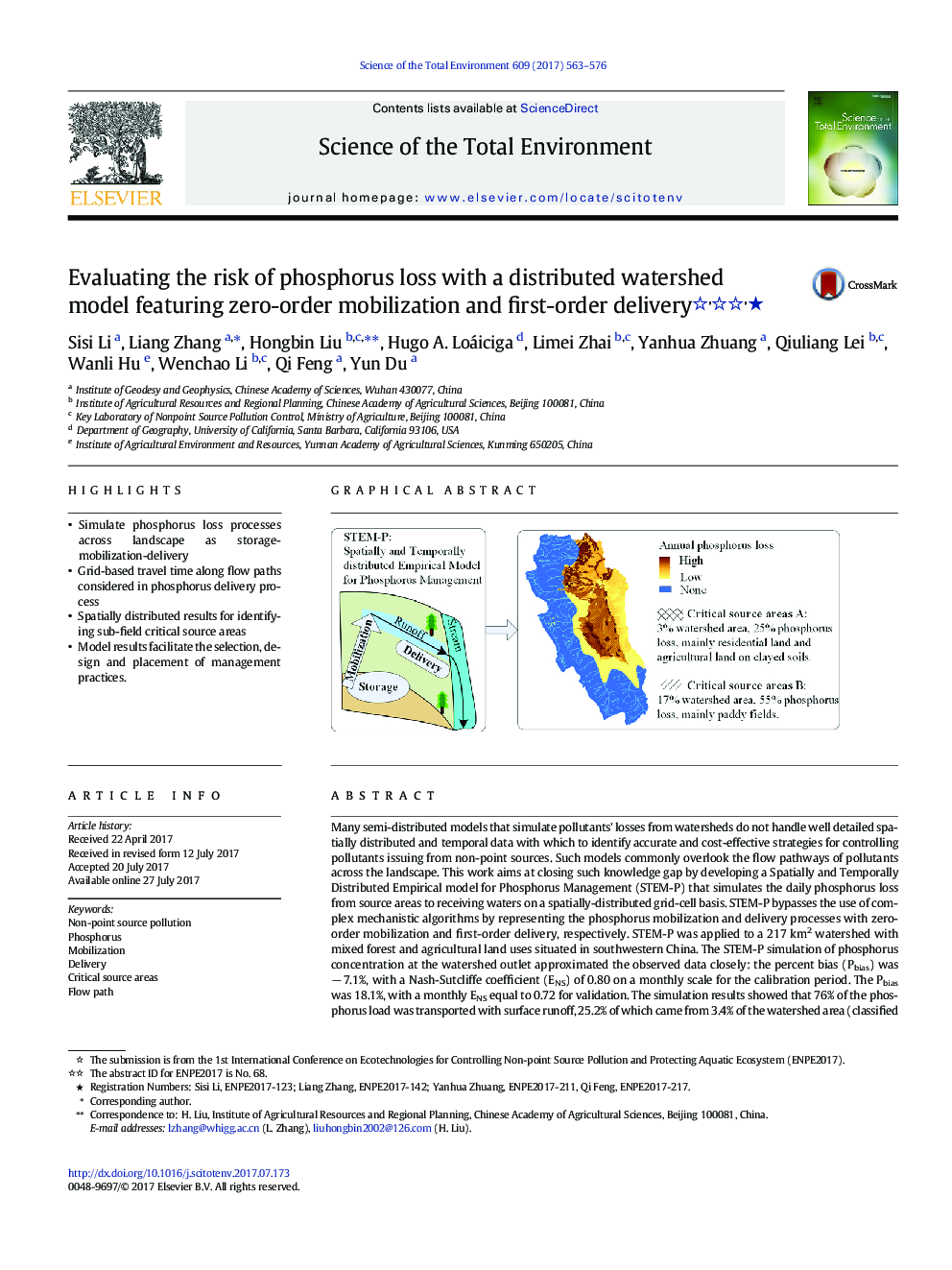| کد مقاله | کد نشریه | سال انتشار | مقاله انگلیسی | نسخه تمام متن |
|---|---|---|---|---|
| 5750784 | 1619693 | 2017 | 14 صفحه PDF | دانلود رایگان |

- Simulate phosphorus loss processes across landscape as storage-mobilization-delivery
- Grid-based travel time along flow paths considered in phosphorus delivery process
- Spatially distributed results for identifying sub-field critical source areas
- Model results facilitate the selection, design and placement of management practices.
Many semi-distributed models that simulate pollutants' losses from watersheds do not handle well detailed spatially distributed and temporal data with which to identify accurate and cost-effective strategies for controlling pollutants issuing from non-point sources. Such models commonly overlook the flow pathways of pollutants across the landscape. This work aims at closing such knowledge gap by developing a Spatially and Temporally Distributed Empirical model for Phosphorus Management (STEM-P) that simulates the daily phosphorus loss from source areas to receiving waters on a spatially-distributed grid-cell basis. STEM-P bypasses the use of complex mechanistic algorithms by representing the phosphorus mobilization and delivery processes with zero-order mobilization and first-order delivery, respectively. STEM-P was applied to a 217 km2 watershed with mixed forest and agricultural land uses situated in southwestern China. The STEM-P simulation of phosphorus concentration at the watershed outlet approximated the observed data closely: the percent bias (Pbias) was â 7.1%, with a Nash-Sutcliffe coefficient (ENS) of 0.80 on a monthly scale for the calibration period. The Pbias was 18.1%, with a monthly ENS equal to 0.72 for validation. The simulation results showed that 76% of the phosphorus load was transported with surface runoff, 25.2% of which came from 3.4% of the watershed area (classified as standard A critical source areas), and 55.3% of which originated from 17.1% of the watershed area (classified as standard B critical source areas). The standard A critical source areas were composed of 51% residences, 27% orchards, 18% dry fields, and 4% paddy fields. The standard B critical source areas were mainly paddy fields (81%). The calculated spatial and temporal patterns of phosphorus loss and recorded flow pathways identified with the STEM-P simulations revealed the field-scale critical source areas and guides the design and placement of effective practices for non-point source pollution control and water quality conservation.
203
Journal: Science of The Total Environment - Volume 609, 31 December 2017, Pages 563-576